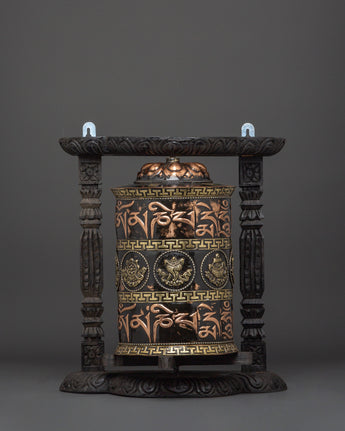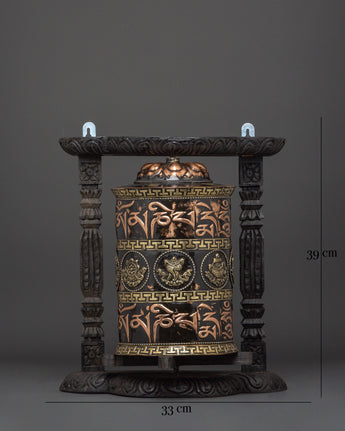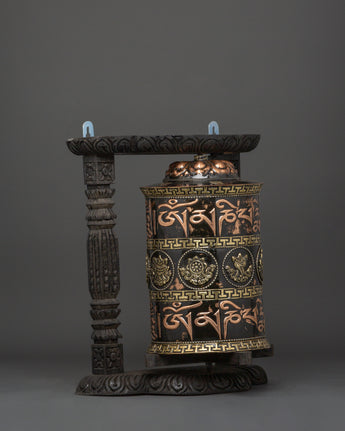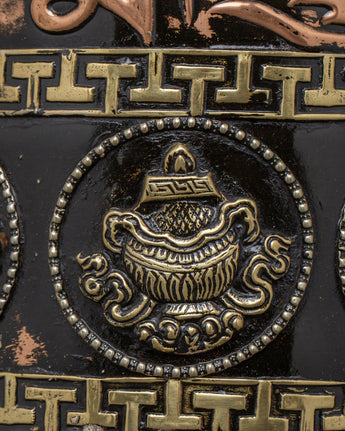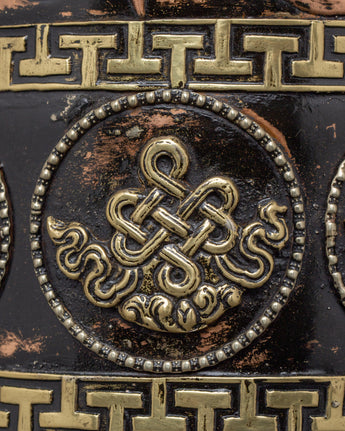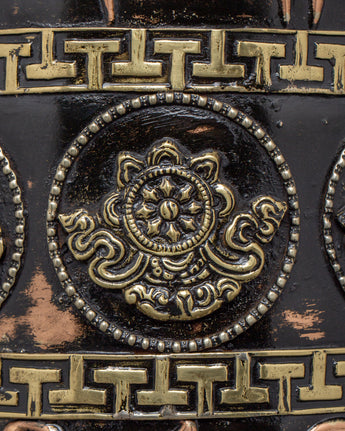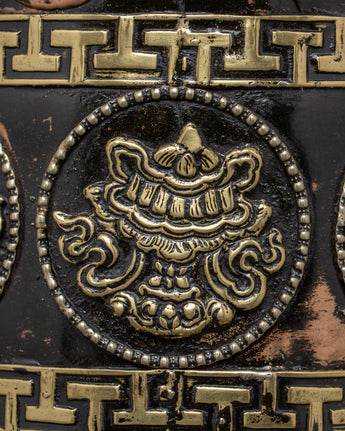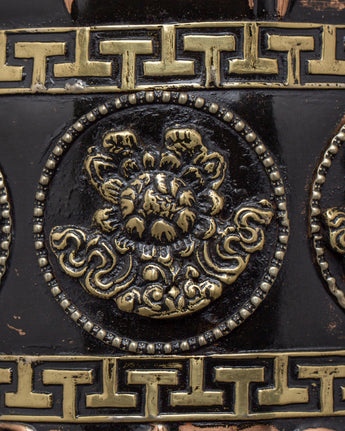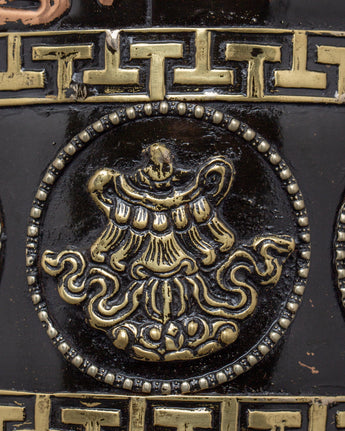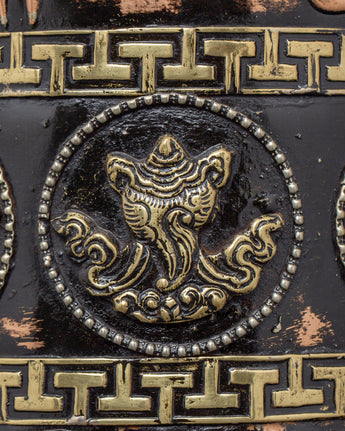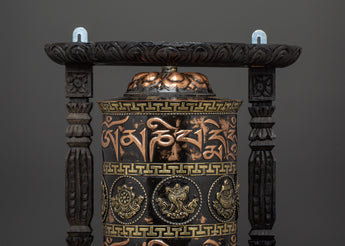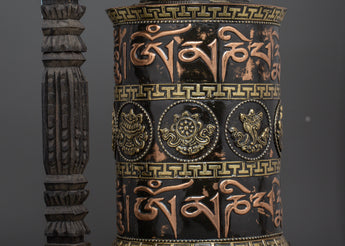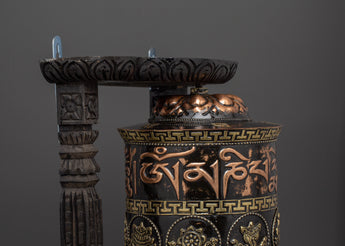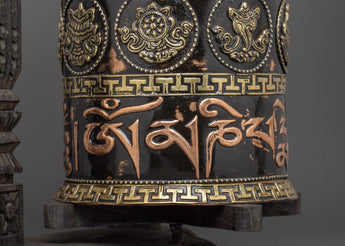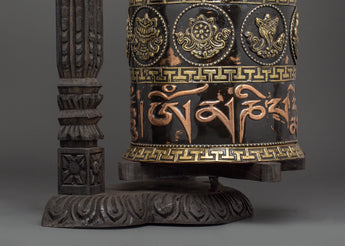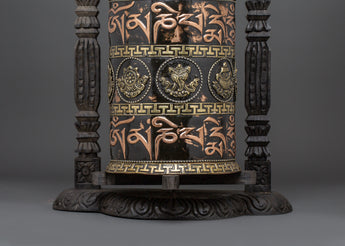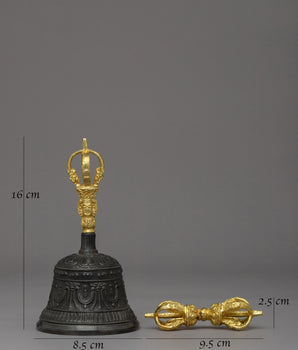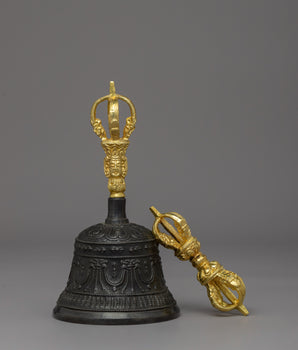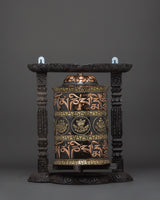
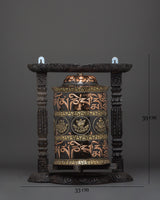
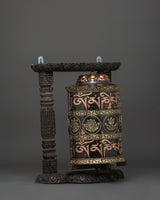
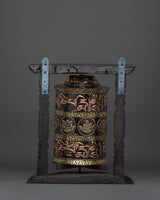
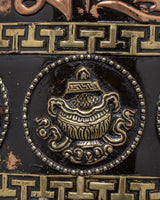
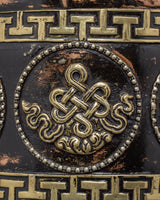
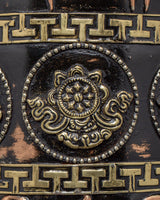
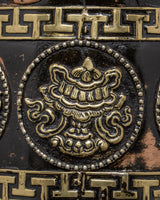
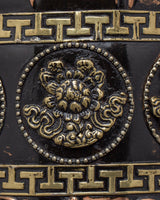
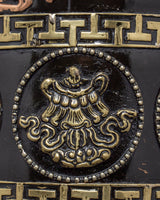
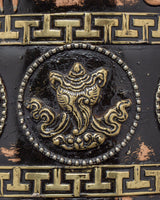
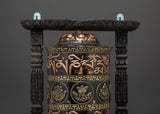
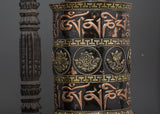
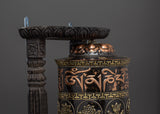
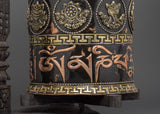
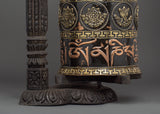
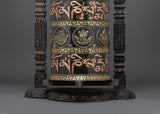
Engraved Copper Tibetan Prayer Wheel | Spiritual Ritual Decor
Engraved Copper Tibetan Prayer Wheel | Buddhist Sacred Tool
--------------------------------------------------------
Size: 39cm (Height) x 33cm (Width)
Weight: 2.58kg
Materials: Copper body, Brass, Wood
--------------------------------------------------------
About our Prayer Wheel
This Engraved Copper Tibetan prayer wheel features a finely carved copper body adorned with sacred mantras and auspicious symbols. This unique Buddhist ceremonial tool, measuring 39 cm in height and 33 cm in width, is crafted from natural wood and features brass, copper, and wood elements, resulting in a distinctive and harmonious design. The detailed carving on the wheel not only enhances its aesthetic appeal but also serves as a potent symbol of protection, blessings, and spiritual energy, making it a valuable addition to any home or meditation space. The auspicious symbols are expertly crafted to enhance positive energy, promoting harmony and balance in your surroundings.
This Tibetan Prayer Wheel is more than just a decorative piece; it is a sacred spiritual tool used in Buddhist rituals to attract divine blessings and promote mindfulness. Whether displayed as spiritual home decor, used for meditation or prayer, or placed on a personal altar, this prayer wheel brings the profound spiritual importance of Tibetan Buddhism into your home. With its hand-carved embellishments and superior craftsmanship, this prayer wheel embodies the rich heritage and spirituality of Tibetan culture.
Introduction to Prayer Wheel
A prayer wheel is a cylindrical device on a spindle, used in Tibetan Buddhism. It is typically inscribed with the mantra "Om Mani Padme Hum" and rotated by hand as a form of spiritual practice and to accumulate merit. Spinning the wheel is believed to have the same spiritual benefits as reciting the mantra verbally. The use of prayer wheels is widespread in Tibetan Buddhism and has spread to other cultures.
How does the Buddhist Prayer Wheel benefit us?
The benefits associated with rotating the wheel are numerous. It promotes knowledge, compassion, and bodhicitta in the practitioner, and enhances siddhis, or spiritual powers, such as clairvoyance and precognition. The practitioner can repeat the mantra as often as possible while the wheel is rolling, maintaining a calm, meditative attitude. A Tibetan Buddhist tradition holds that after a practice session, one should dedicate any acquired merits to the benefit of all sentient beings. Then three times Om Ah Hum. This is usually among Tibetans after finishing any Buddhist practice, including the prayer wheel exercise.
How do you set up your own Buddhist Shrine?
• Find a clean, quiet, and uncluttered spot
• Set up an altar table and cover it with an altar cloth that calls to you
• Place your sacred item at the center

